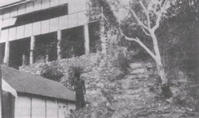


Glimpse of the RAAF Meteorological Service
Preface
Foreword
Introduction
Chapter 1: Growing Up
Chapter 2: Port Moresby Before Pearl Harbour
Sydney to Port Moresby by DH-86
First Impressions of Port Moresby
Meteorological Office Routine
Flight to Kokoda
Tropical Meteorology
John (Doc) Hogan
Setting up House
We Join the RAAF
A Contrast in Attitudes
Some RAAF History
RAAF No 10 Squadron
RAAF No 11 Squadron
The Catalina Story
Construction of the Seven-mile Airstrip and Reclamation Area
Meteorological Service for the RAAF
Unexpected Vistitors
Our State of Readiness
Our Domestic Situation
A Japanese Surprise Packet
What Had We Meteorologists Achieved?
Chapter 3: Port Moresby After Pearl Harbour
Chapter 4: Allied Air Force HQ and RAAF Command, Brisbane
Chapter 5: Japan Surrenders and We Are Demobilised
Epilogue
Acknowledgements
Appendix 1: References
Appendix 2: Milestones
Appendix 3: Papers Published in Tropical Weather Research Bulletins
Appendix 4: Radiosonde Observations 1941–46
Index
Search
Help
Contact us

First Impressions of Port Moresby
As we drove from the aerodrome to the town I was surprised by the dustiness of the gravel roads, having expected to see lush jungles. Port Moresby receives little rainfall from April to September when the south-east trade winds blow. Considerable rain falls throughout the year on the high mountains not far inland.Indigenous Papuans were much in evidence walking on the roadside. Few white people were seen. Most of the Papuans were without shoes and wore no clothing from the waist up, the women dressed in thick grass skirts which swayed seductively as they walked. The men wore lap-laps, a short skirt made of coarse linen. The sight of bare-breasted women was a novelty for me and I noted that the young women were quite attractive. The colour and physique of the Papuans varied considerably, the smaller Motuans from eastern Papua being of slight build with light brown skins whilst others, from western Papua, were tall, muscular and quite black, with large aquiline noses.
Doc Hogan lived with his wife in a rudimentary but comfortable and roomy house in Pandora Crescent on a hill adjacent to the town of Port Moresby. The house (see Figure 3), which was to be our first home after marriage, commanded a magnificent view of the whole of the immense harbour as well as the town of Port Moresby, which consisted of the wharf, some warehouses, shops, churches, government offices, two hotels, a hospital, a small cottage housing the office of AWA and an open-air picture show.

People in Bright Sparcs - Hogan, John (Doc)
 |
Bureau of Meteorology |  |
© Online Edition Australian Science and Technology Heritage Centre and Bureau of Meteorology 2001
Published by Australian Science and Technology Heritage Centre, using the Web Academic Resource Publisher
http://www.austehc.unimelb.edu.au/fam/0391.html